Lima’s Plaza de Acho hosts bullfights on Sundays during the annual season held in October and November.
Built in 1766, the Plaza de Acho in Rimac is the oldest bullring in the Americas. Before its construction, Spanish colonists in Peru held bullfights in the Plaza de Armas.
In bullfighting lingo, the bullfighting fanbase is known as the “aficion.” And they are not “bullfights” in Spanish, but “corridas.” Peru’s season of corridas is known as the “Feria del Señor de los Milagros.” It took its name from being held during October, also known as the purple month for the Lord of Miracles celebrations in Lima.
Attending the Bullfights at Plaza de Acho
You can check the schedule for the corridas at Feria del Señor de los Milagros website. For now, tickets are sold at Teleticket kiosks located in Metro and Wong. You can purchase on their website, but you would have to pick the tickets up at a location anyway.
As in Spanish tradition, bullring tickets are sold in the sun, shade or mixed categories. The aficion hardcore sit in the sun wearing white shirts and sombreros. Lima’s weather in October and November can be tricky. If the sun is out in full force in November, it could be hot and sweaty. But even on a hot day, seats in the shade can get cold by the fifth or sixth bull as the sun goes down. It is best to dress in layers.
The Plaza de Acho is an easy walk from downtown Lima. Walk north on Abancay avenue until you cross the Rimac river. After the bridge you will come to an intersection with a stoplight directing traffic from east and west. Do not turn left or right however. Straight ahead is a small, gated street which leads to the bullring.
On this street you can buy padded seats, sombreros, beer and an inexpensive meal. All these are more expensive inside the stadium.
The Aficion
Bullfighting is very much an upper-class interest in Lima and throughout Latin America. Plaza de Acho’s nosebleed seats start at S/. 300 ($90) and go up to S/. 1535 ($450).
Bullfighting is not at all a men’s club. The matadors are handsome men wearing tights which accentuate their masculinity. While my wife thinks the show is rather feminine, see an account from an American woman in Lima who was moved by the spectacle.
Given how expensive of an interest the show is, the bullfights may be home to the most concentrated gathering of Spanish-blooded, white skin in Peru. Known as “pitucos” in Peruvian slang, or “preppie” in English, the standard uniform for men is a white dress shirt tucked into jeans or khakis. White, powder-blue or pink dress shirts account for 80% of the attendees. Throw in a puffer vest or draped sweater with sunglasses for extra-preppie credit.
Bullfighting is very much a drinking affair. Beers inside the plaza cost S/. 15 ($5). They also sell chilcanos and other cocktails. Other aficionados bring boots filled with sangria, wine or their liquor of choice. There will be catcalling, shouting or maybe a fight among spectators as the alcohol magnifies the emotions of the corrida. The more middle-class attendees will eat and drink on the street before entering the stadium, while the pitucos will do both inside.
Elements of a Bullfight
The English word “bullfight” is a misnomer, and it does not help to think of bullfighting as a “sport.” A strict translation for the spectacle would be the incomprehensible word, “tauromachy.”
Bullfighting is not a competition, and the bull’s death is a foregone conclusion. Bullfighting is a performing art like ballet or circus.
The show is a demonstration of the matador’s courage and control over a wild, ferocious animal. Generally speaking, his courage is demonstrated by how confident he is in executing his passes. What kind of passes does he perform, how close does the bull pass, etc.
The “torero” is a generic term for all bullfighters in a “cuadrilla.” The cuadrilla is the team of toreros which lead the show and kill the bull. The “matador” is the star of the show who kills the bull with a sword, and the captain of the cuadrilla.
The “picador” is the cuadrilla’s torero mounted on horseback and armed with a lance. The “banderilleros” assist the matador on foot with “capote” capes and armed with banderillas.
In the first act, or “tercio,” the matador and his banderilleros will run the bull around the ring with large capes known as “capotes.” The matador observes the strength, ferocity and quirks of the bull.
Then the picador enters on his blindfolded horse. If the horse could see, he would panic and run away at the sight of the bull. As the bull charges to gore the horse, the picador stabs the bull in the neck muscles with the lance. The cuadrilla all observe how the bull reacts to its first wound.
In the second act, the banderilleros continue to perform passes with their capotes. Each banderillero will attempt to jump over the bull’s horns and plant two banderillas into the bull’s shoulder muscles. Four banderillas must be planted to proceed to the final act.
The preliminary wounds weaken the bull and reduce the distance it can raise its head. However it is still more than capable of goring, seriously injuring and killing the matador.
In the third act, the matador will perform a series of passes with a smaller “muleta,” the red cape associated with bullfights. In this final act, the matador presents the greatest drama in demonstrating his courage and control over the animal before stabbing in through the shoulder blades.
The matador’s performance is judged by how much risk he takes, or how much irreverence he shows toward the bull and its danger, as well as the emotions he inspires in the fans. The distance he allows between himself and the horns (the less the better), the degree of difficulty of his passes (behind his back or even on his knees), looking away or even turning his back on the bull, etc.
An excellent performance will prompt the aficion to wave white towels in the air, which is their petition to the bullring president to award the matador a trophy. The trophy can be one ear, two ears or two ears and the tail. If the matador wins a trophy, he will lead his cuadrilla around the bullring a victory lap as the fans shower him with roses, sombreros and more.
For more information on bullfighting, see the English-language fan page, Aficionados International:
Pictures and Video
The pictures and video in this article were taken from the Nov. 29, 2015 corrida featuring the Peruvian Andres Roca Rey and Spaniard Enrique Ponce. This show was the event of the year as the up-and-coming Peruvian star cut four ears and won the Escapulario de Oro, Lima’s annual award for best performance in the Plaza de Acho.
Unfortunately my videos are all from Roca’s first bull, a difficult bull to work with. However you can see it almost tossed him twice at ? and ?. His performance with the second and third bulls earned him the four ears. Above is a true aficionado’s video of the full running in Roca’s Escapulario-winning performance on his second bull of the day.
Ponce, a five-time Escapulario de Oro winner Ponce and Roca’s mentor who is beloved in Lima, cut one ear in what could have been two.
The halftime show featured a Marinera, the traditional criollo dance performance from Trujillo featuring a barefoot woman and a man mounted on horseback.
Click the pics to enlarge. For high-res slideshow viewing, see the Plaza de Acho: Bullfighting in Lima album on the Lima City of Kings Facebook page.
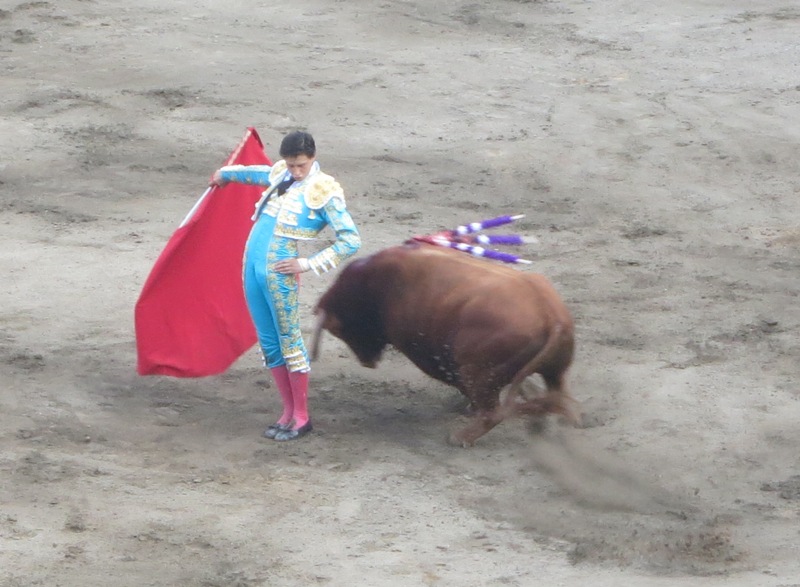
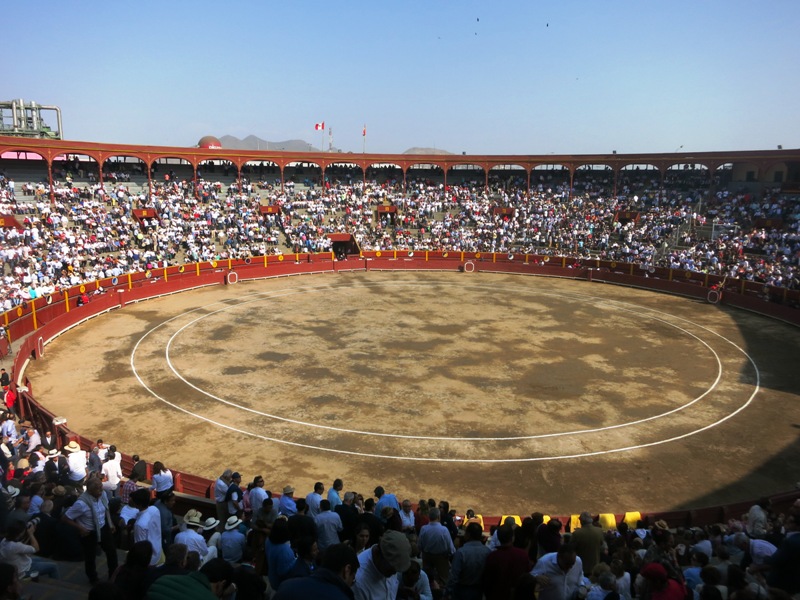
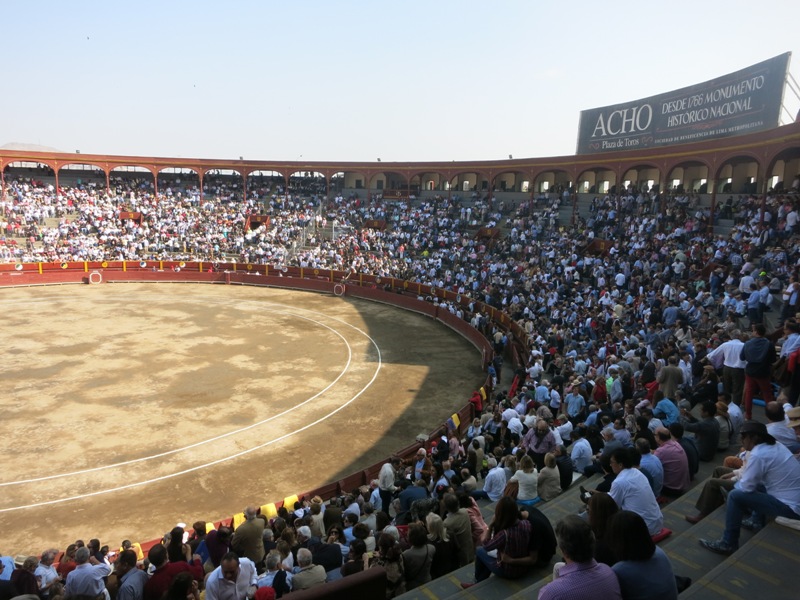
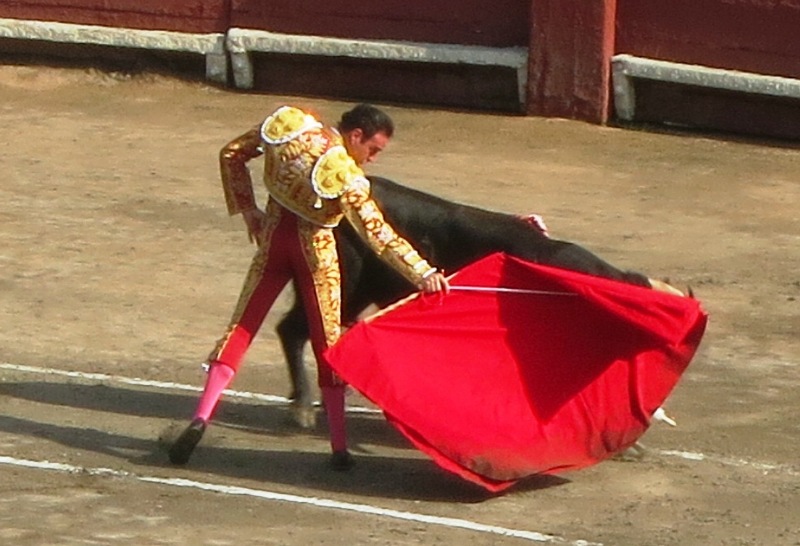
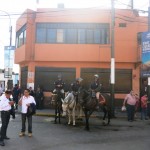
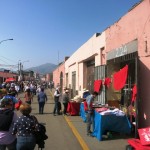
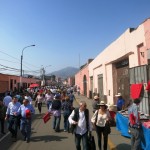
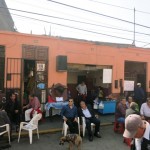
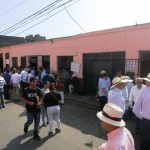
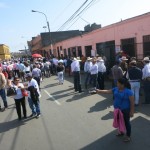
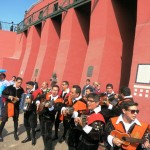
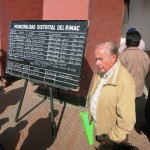
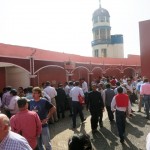
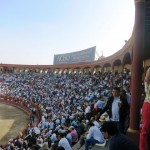
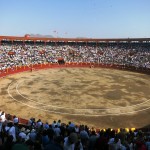
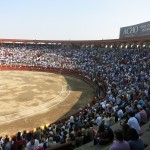
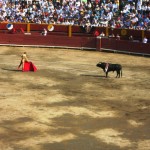
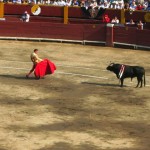
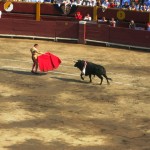
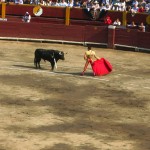
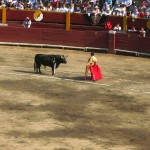
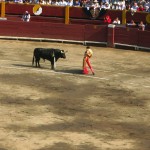
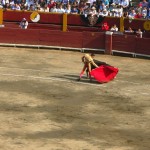


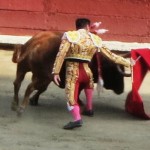
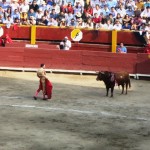
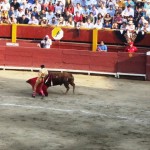
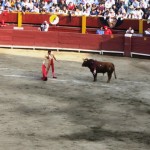
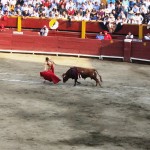
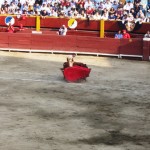
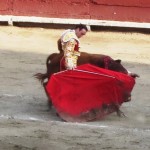
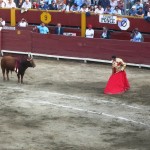
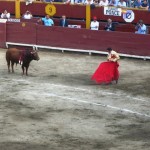
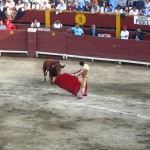
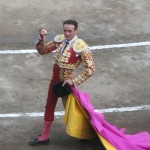
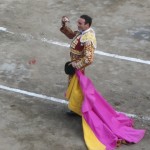
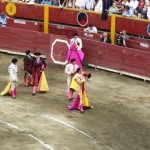
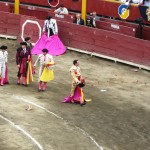
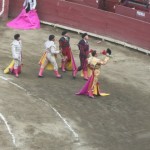
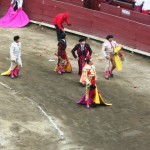
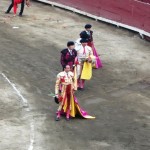
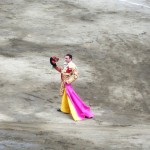
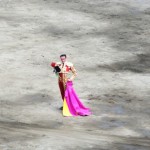
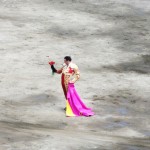
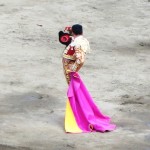
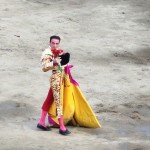
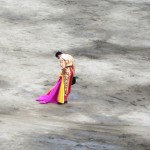
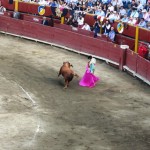
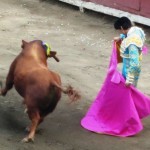
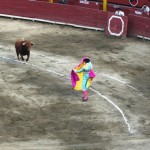
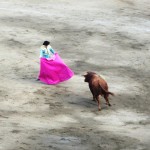
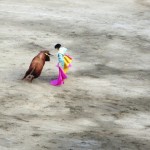
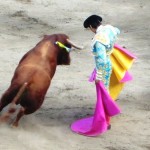
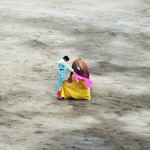

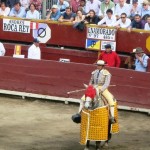
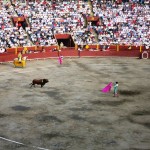
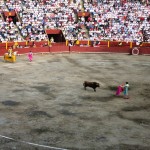
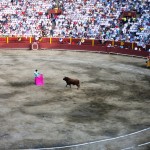
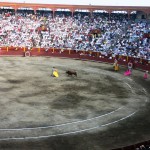
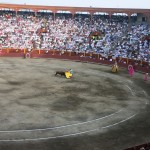
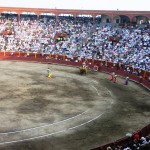
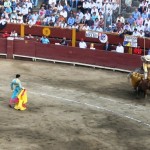
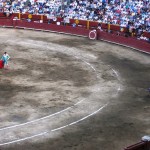
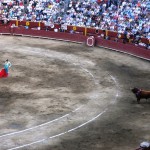
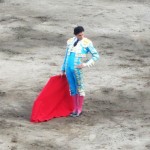
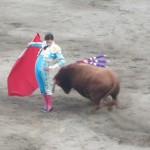
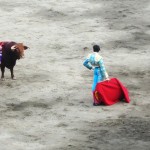
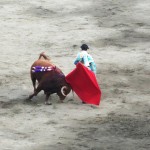
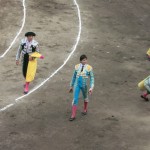
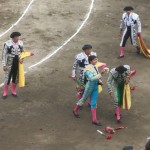
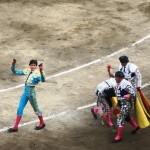
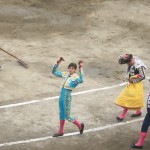
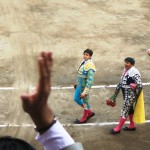
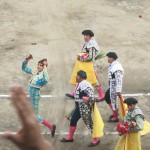
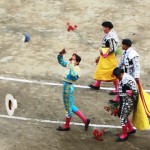
When can I buy tickets for the bullfight that will take place the first week of November.
Thanks.
Rosa Maria
Hi Rosa Maria, did you ever figure this out? I’m trying to do the same thing for this year (2019).
This is freaking barbaric! If the matador really wants to fight the bull then he or she needs to go in without any help whatsoever, and no weapons. This is a barbaric practice that is not even native to Peru. Ban this or tourism will suffer.
Great Idea. Hope to have time with you and share mine about real estate properties